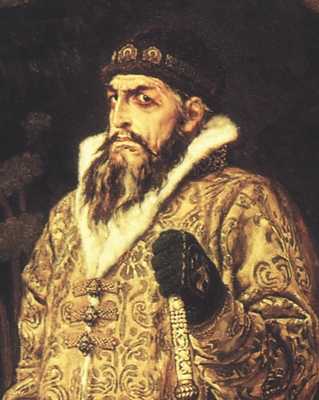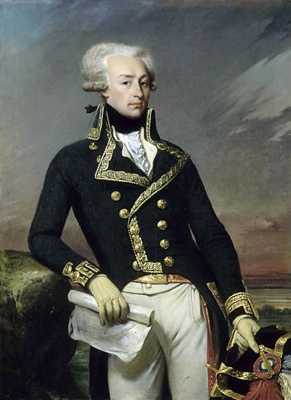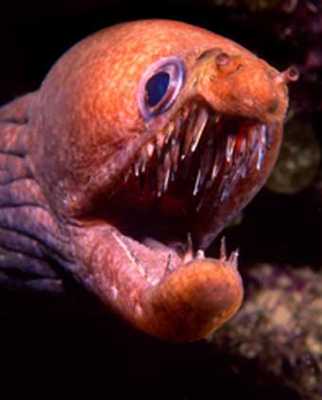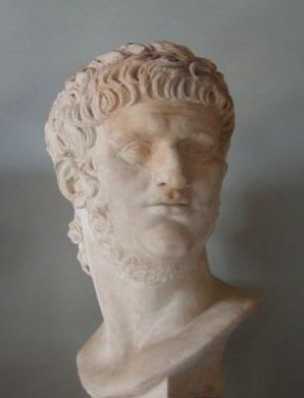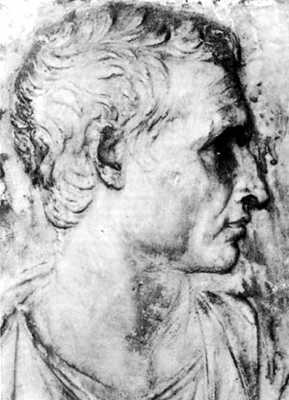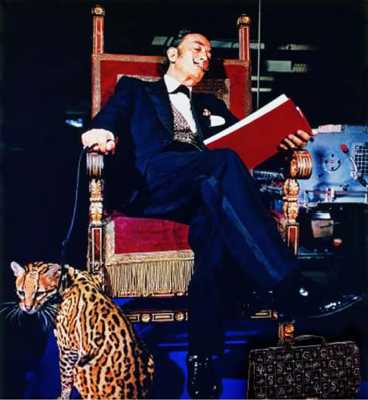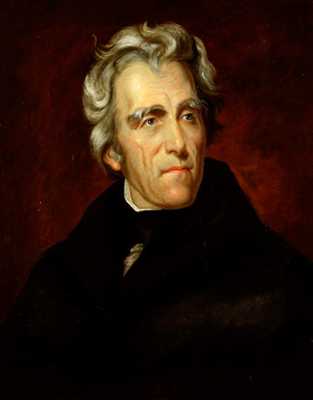In many parts of south eastern Asia, white elephants (an extremely rare color variety of the Asiatic elephant, rather than a separate species) were thought to be sacred, an omen of good fortune and symbol of all things royal and/or divine. Pope Leo X (who was a member of the powerful Medici family, and the last non-priest to be crowned Pope), is said to have received a white elephant, named Hanno, as a gift on his coronation; it was given to him by King Manuel I of Portugal, who had probably acquired it via his viceroy in India. The elephant was sent from Lisbon to Rome, in 1514, along with his two trainers, and made a great impression among locals. Hanno was well trained and extremely intelligent, able to understand and obey orders given to him both in Indian and Portuguese. Before being presented in the Pope’s court, Hanno was kept at the villa of a powerful cardinal; people were so eager to see the beast that they even attempted to break into the cardinal’s property. Hanno quickly became the Pope’s favorite pet; a special enclosure was built for him near the Holy Father’s residence, and he was paraded during the most important ceremonies in Rome. Unfortunately, Hanno didn’t adapt well to his new home; three years after his arrival to Rome, he became ill. The Pope had his finest doctors treat him but unfortunately, their remedy (a purgative containing gold) was even worse than the disease, and it killed the hapless elephant. He was buried in the Cortille del Belvedere, and the Pope had Raphael himself paint a commemorative fresco of Hanno (now, unfortunately, lost). The Pope also wrote a poem dedicated to his pet, regretting his untimely death (elephants can live up to 70 years, but Hanno didn’t even make it to seven).
Ivan the Terrible, famous as one of History’s most brutal rulers, was famous for having people executed in diverse, exceedingly cruel ways, such as impaling, drowning, strangling, and even roasting or frying or being buried alive. However, one of his first and favorite methods for dispatching people was having them mauled to death by bears. It is often said that he kept two or more bears in special “dens” in his castle, and that they were deliberately underfed. Ivan would sometimes throw prisoners to the animals, or even turn the bears loose on innocent pedestrians just for the fun of it. Although sometimes called “pet bears” by some authors, it is likely that Ivan had no affective bond with these animals, whatsoever; it is known that he was actually very cruel to animals from his early years, and wasn’t above hunting wild bears for sport; therefore it makes more sense that he kept the bears merely as intimidating executioners… kind of like a James Bond villain. He was not the only ruler in History known to have kept bears; US president Thomas Jefferson kept two grizzly bear cubs, and the same is said of Calvin Coolidge. But perhaps the earliest ruler with a soft spot for bears was Ptolemy II, king of Egypt from 285 to 246 BC, who is said to have been very fond of a “white bear” he kept in his private collection, so much in fact that he would have the animal be at the very front of parades during festivities (although whether he felt true affection for it, or just used it as an impressive symbol of his power is up to debate). This “white bear” is often considered to have been the first captive polar bear in History, but some experts believe it may have been a Syrian brown bear, which often has a very light colored coat and was native to Egypt and surrounding countries in ancient times.
Napoleon Bonaparte’s first wife was, like many French aristocrats at the time, fond of exotic pets. Her personal favorite was a female orangutan, which was even allowed to join her owner at the table during meals (the ape’s favorite treat being turnips). The orangutan was beautifully dressed in a white cotton chemise, and was seemingly very well behaved in front of guests. Josephine was also fond of dogs; her most famous dog, Fortune (a pug), was used by the Empress to send secret messages to her family while she was being kept prisoner at Les Carnes (since Fortune was the only one allowed to visit Josephine). According to a certain story, Napoleon even had to accept Fortune in his bed, against his will, because Josephine told him that if the dog didn’t sleep in Napoleon’s bed, neither would she! Besides her orangutan and dogs, Josephine kept flocks of exotic birds and herbivorous animals (she didn’t really like predators because she couldn’t have them roam free around the Malmaison castle). She even had a French explorer hired to procure exotic animals for her collection; the guy’s name was Nicolas Baudin, and he sent many unusual animals to France to please the Empress, including kangaroos, emus and Australian black swans. Baudin was, for the record, the first man to explore and map the western part of Australia.
It is often said that US president John Quincy Adams kept an alligator as a pet in the White House, but this is not entirely true; instead, the reptile belonged to the Marquis of Lafayette, who received it as a gift when touring the country, in 1825. When he visited the White House, Lafayette had his pet gator with him, and the reptile was given a bath tub in the East Room as its temporary residence. Of course, the gator’s presence was unnerving, to say the least, for almost everyone in the White House, particularly during the first days, when people would unsuspectingly enter the bathroom and have a big surprise, although some sources state that Quincy Adams found the situation to be very amusing. The gator, however, didn’t stay in the White House; when Lafayette left, he took his unusual pet with him. Lafayette’s pet was not the only gator to have lived in the White House; Herbert Hoover’s second son, Allan, had two gators of his own, and these were even allowed to roam free around the White House grounds.
Romans in general were very fond of Moray Eels; they were not only considered a delicacy, but also held to be excellent pets, and some extravagant aristocrats even adorned them with jewelry and wept whenever the animals died. Consul Licinius Muraena (who even got his name from the fish he reared) is said to have loved moray eels more than anyone else; he kept around 6000 of them in special pools on his property; he is also notorious because of the unusual fodder he used; live slaves. Note that not all experts are convinced about the identity of Licinius’ pet fish as moray eels; some argue that the word muraena was originally applied to lamprey, which are eel-like vertebrates with disc-like mouths to suck blood. Lampreys are edible and enjoyed as a delicacy in some parts of Europe since ancient times (moray eels are rather dangerous to eat, since their blood contain highly toxic substances, and can cause serious illness or even death by poisoning to humans). However, Roman paintings often depict the Mediterranean moray eel and not the lamprey, which may be evidence that this was, indeed, the species kept. Today, moray eels are not considered to be man eaters, although their sharp teeth, powerful jaws and voracious appetite make them somewhat dangerous to inexperienced divers.
It is sometimes said that the only creature Roman Emperor Nero ever loved, was his pet tigress Phoebe. Nero first saw her as a fighting beast in the Colloseum, where he was impressed by her ferocity- she was said to cause more havoc than three other tigers combined. Nero decided to spare Phoebe’s life and keep her as his personal companion; he had his servants build a golden cage for her in the palace grounds, but she wasn’t locked up all the time, instead having dinner with the Emperor at the table, even when he had guests! Of course, anyone who annoyed or irritated Nero in any way would end up as Phoebe’s dessert. By the way, Nero reminds me a lot of Harry Potter villain Lord Voldemort, in which he keeps a large predatory animal as a pet only he can control, said by others to be “the only creature he cares about”; Voldemort even feeds his frightening pet with those who irritate him, just like Nero did. Is it possible that J. K Rowling took inspiration from this infamous real life character? Just a thought…
Widely considered to be the greatest and most powerful pharaoh of all times (although there are also many who accuse him of exaggerating his own achievements to the extreme), Ramses II is said to have been an avid cat person; some say that he even had cats be imported in huge numbers from other countries to Egypt (where the local cats were already sacred). But as a personal pet, larger than life Ramses preferred a much bigger kind of cat; he kept an adult male lion, whose Egyptian name has been variously translated as “slayer of his foes”, “he who repels the enemy” or even “invincible”. The lion was not only a palace pet, but also an aid during battle, and the pharaoh was said to have had the lion by his side during his famous battle at Kadesh, against the Hitites. Some sources even state that the lion was among the few members of Ramses’ army who didn’t flee in panic when the Hitites ambushed the Egyptian camp (after the battle, Ramses beheaded his generals himself as punishment for their cowardice, and it is likely that their bodies ended up being the lion’s dinner). Although not everyone believes Ramses’ account of the Battle of Kadesh, his unfortunate generals are not even mentioned by name in the reliefs that describe it, but instead, Ramses’ pet lion is depicted charging at the Hitites by his side, forever immortalized along with his master. As a side note, Kadesh was not the first battle in which Egyptians used lions as a valuable aid; it is said that they would often take hungry caged lions with them to the battlefields, and release them so that they cause panic and chaos among the enemy’s horses and infantry.
Arguably the greatest musical genius of all time, it was only logical for Wolfgang Amadeus Mozart to be attracted to musical animals; there are records that he bought a starling from a bird store, and that he kept it as a pet for three years. During those years, Mozart became extremely fond of the animal (to whom he referred, affectionately, as “a little fool”), and he also admired its ability to mimic new sounds, including Mozart’s own melodies! Some have even said that Mozart took inspiration from his pet bird’s songs to write some of his concertos, but this is impossible to confirm. What we do know is that when the starling died, Mozart grieved its death as that of a family member, and he organized a funeral and even composed an epitaph for the bird. The first words of said epitaph make it clear that Mozart, unlike some other characters in this list, genuinely loved his pet. “Here lies a little fool, whom I held dear; a starling in the prime of his brief time, whose doom it was to drain death’s bitter pain. Thinking of this, my heart is riven apart!”
Virgil was a Roman poet (best known for writing The Aeneid) who was always, for some reason, linked to flies. He built a bronze statue of a fly that guarded the Gates of Naples for a long time, and it was said that this musca magica, magic fly, would keep its annoying real life counterparts away from the city as long as it remained intact. Legend has it that Virgil’s bones after his death protected Naples against attackers, causing them to be attacked by swarms of flies. And it is even said that it was Virgil who first used the expression “time flies” (although in Latin, of course). Perhaps the craziest fly story regarding Virgil, however, is that of his “pet fly”. In reality, Virgil didn’t keep a fly as a pet, but he then found out that the government was planning to confiscate the lands of the rich, and parcel it out to war veterans, except for those lands that contained mausoleums. Virgil then had an incredibly lavish funeral (with mourners, an orchestra, invited celebrities and lots of poetry reading) organized for a house fly that, he said, had been his beloved pet. Then, the insect’s body was buried in an expensive mausoleum. The whole thing costed Virgil about 800.000 sesterces, but he saved his lands from the government.
Easily the most disturbing “exotic pet” in this list, although one on which there is little information, and which is disregarded as a legend by most experts. It is said that a certain Count Guliemus had a pet ape (most likely a chimpanzee), as well as a wife that was rather promiscuous. In fact, when the Count wasn’t home, the wife would have sexual relations with the animal. This spelt doom for the poor Count, for one day, when the ape saw him lying with the Countess, it went berserk and brutally mauled his master. The Count died of his wounds, but the wife survived and eventually give birth to a monstrous creature, the result of her affair with her husband’s jealous pet. Somehow, the hybrid boy (whose name was said to be Maimo), ended up with Pope Alexander II, who even showed the creature to religious leader Peter Damain, who wrote about it in his story “De bono religiosi status et variorum animatium tropolagia”. Although technically possible due to the genetic closeness between man and chimpanzees (the Nazi were even said to have attempted hybridization), a true hybrid between man and ape has never been confirmed. Some are convinced that Peter Damain’s report was true, but others think it is more possible that Maimo was simply a deformed and mentally handicapped human child. So this creepy story remains a mystery to our days, but due to the biological plausibility of a human-ape hybrid and the fact that indeed, aristocrats were fond of keeping apes as exotic pets at the time, it shouldn’t be completely disregarded as a mere fantasy.
Salvador Dali will forever be remembered as a very eccentric man, and so it shouldn’t be surprising that he also had some unusual pets. When he was a kid, he had a pet bat, and later in life he developed some sort of obsession with anteaters, presumably because he hated ants since he found them devouring his pet bat’s dead body one day. But although Dali was seen and photographed walking an anteater on a leash in Paris, it seems that the animal was not actually his pet. Dali’s actual exotic pet was an ocelot named Babou, who even joined his master in fancy restaurants. There is a funny anecdote about a woman who was outraged at the fact that there was a wild animal in the restaurant. Although she yelled at Dali, he kept his cool and explained to the embarrassed woman that the ocelot was, in fact, a house cat, and that he had painted it to make it look “op-art”. She bought it, of course; after all, it was Dali she was talking to…
Parrots are not unusual pets; even today, many people keeps these (often endangered) birds as companions due to their intelligence, bright colors and ability to mimic speech. Some parrots can even be taught to use some words in a context. However, Andrew Jackson’s pet African grey parrot deserves to be on this list because he was just hilarious. The bird’s name was Pol, and the president had bought him as a gift for his wife Rachel. Unfortunately, Rachel died, and the President had to take care of Pol himself. Later, when Jackson himself died, Pol was present during the funeral. However, he had to be ejected from the ceremony when he started swearing and yelling blasphemies in both English and Spanish, all of them learned from the president!

